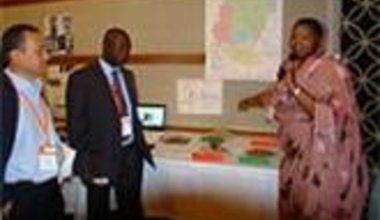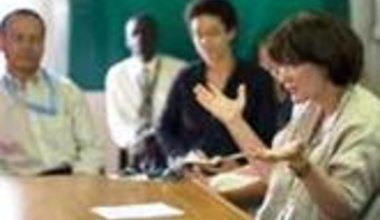Japanese inspect school projects in Lainya
The Japanese were prepared to assist in rebuilding education infrastructures in Southern Sudan, Yosika Kijimo, Director for Humanitarian Assistance in the Japanese Ministry of Foreign Affairs said during a recent visit to a primary school in Lainya County, Central Equatoria State.
The Japanese were prepared to assist in rebuilding education infrastructures in Southern Sudan, Yosika Kijimo, Director for Humanitarian Assistance in the Japanese Ministry of Foreign Affairs said during a recent visit to a primary school in Lainya County, Central Equatoria State.
"That is why we contribute to UNICEF and other non-governmental organizations," said Mr. Kijimo, who arrived in the county with a Japanese Foreign Ministry delegation on 8 May to inspect projects funded by Japanese Humanitarian Assistance and implemented by UNICEF.
Lainya County Commissioner Samuel Suba noted that only seven of the county's 42 primary schools were permanent structures. "This means that most of the learning takes place in temporary shelters or in the open air. Coupled with a deficit of professionally trained teachers, this has led to poor performance of pupils."
Commenting that Japan itself had been at war a hundred years ago, the Japanese Humanitarian Director said many nations had helped his country rebuild through UNICEF and non-governmental organizations. "Now we are a big economy and contributing to other conflict-affected countries ... you too can develop into a stable economy."
Japan contributed $8.6 million in 2008 through UNICEF to the Child-Friendly Schools Project, led by the Government of Southern Sudan. The initiative strives to ensure schools have adequate classrooms, materials, trained teachers and water and sanitation facilities to improve the quality of education being delivered.
The Japanese funds have helped construct 20 permanent schools and renovate 19 others. They have also provided water in schools as well as 350,000 sets of textbooks, benefiting 750,000 schoolchildren.
 UN
UN United Nations Peacekeeping
United Nations Peacekeeping





